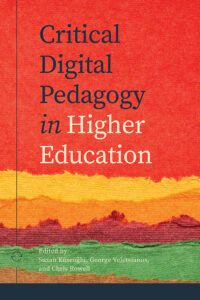In a new report funded by the British Columbia Council on Admissions & Transfer (pdf) Valerie Irvine, Nicole Johnson, and I examined the evolving nature of online, hybrid, and multi-access learning within the British Columbia (BC) post-secondary education system. Our objectives included assessing potential changes in the scope and nature of online learning in BC, understanding stakeholder insights on learner preferences towards online and hybrid learning, and identifying areas that require further exploration and discussion.
Recent pan-Canadian research indicates that higher education institutions anticipate a future with more online and hybrid options. This aligns with the growing demand for such learning modalities and changing learner preferences, as corroborated by studies in the USA and UK. Understanding these trends in the BC context is crucial since returning to in-person education while simultaneously catering to the growing demand for online learning presents considerable challenges for BC institutions primarily built around traditional, in-person instruction.
To develop a greater understanding of the changing nature and volume of digital learning modes and learner preferences toward them we conducted interviews with twenty-five individuals comprising administrators, faculty members, and staff from the BC Ministry of PSEFS or system support organizations.
Major findings suggest that while in-person education in the province is predominant, participants (a) reported the learners demand more online and hybrid options, and (b) expect that online, hybrid, and multi-access learning in the BC post-secondary system will become more prevalent. We also identified that shifts in learner preferences are shaped by a variety of factors and vary by learner subpopulations, that modality is messy and masks variability, and that the “right mix” of modalities is unknown. Finally, we noted that online and hybrid learning enable access, and provide opportunities for equity, diversity, inclusion, and decolonization.
Recommendations for BC post-secondary institutions include the following:
- Develop criteria for determining course and program modality.
- Collect and analyze disaggregated data on learner preferences, choices, and contexts using consistent definitions of in-person, online, hybrid, and multi-access learning,
- Support faculty members’ development to teach in online, hybrid, and multi-access contexts.
- Increasing capacity for research, teaching, and collaboration
- Approach alternative delivery modes with anticipation and foresight.
Please read and share the report. The question of the role of online and blended learning in BC is by no means a settled question, so we’d love to hear you input, questions, and insights!

 Photo by
Photo by 
